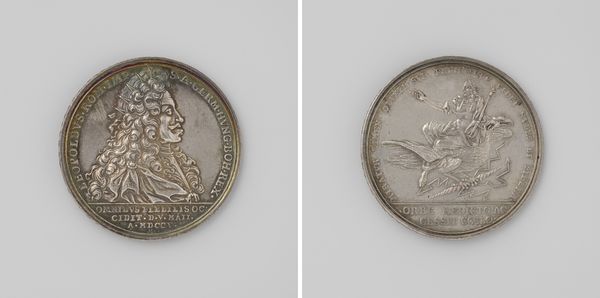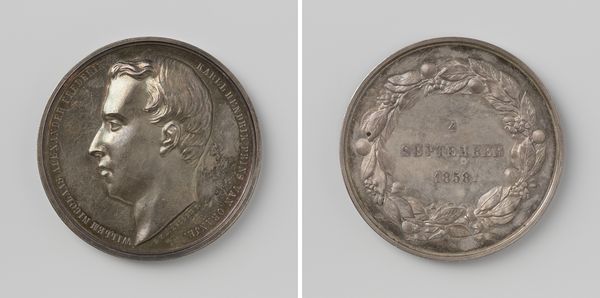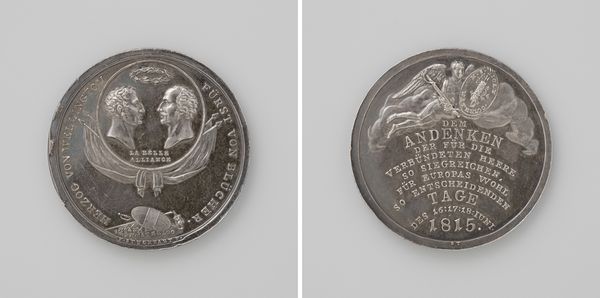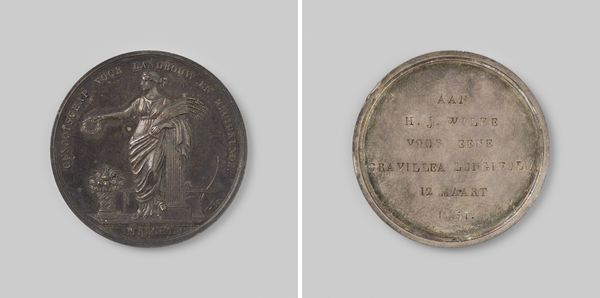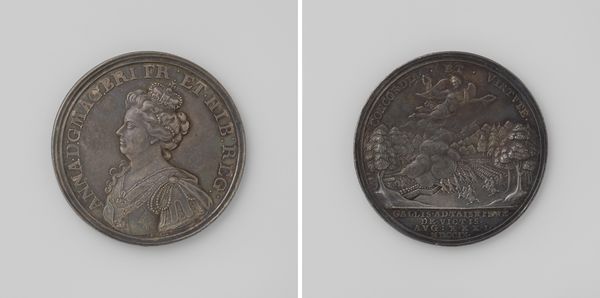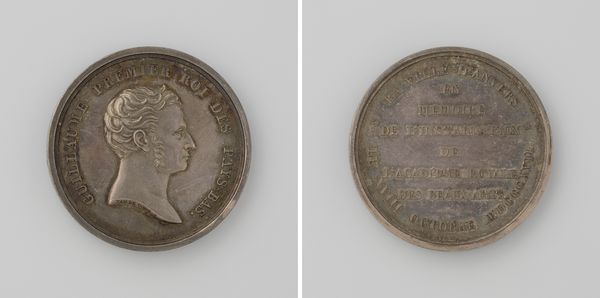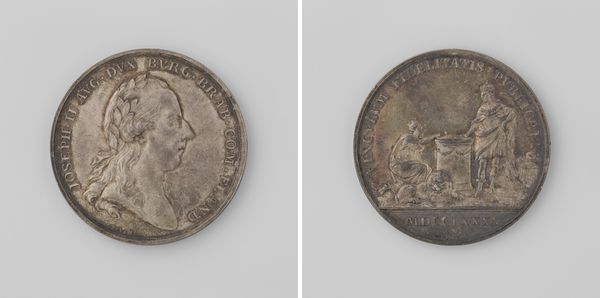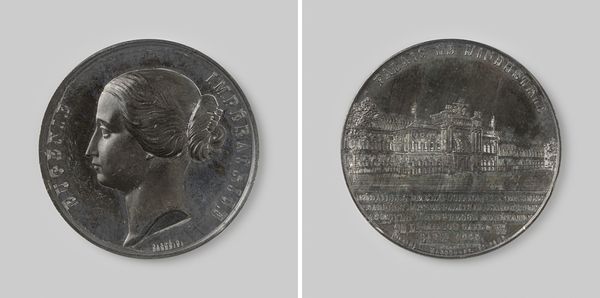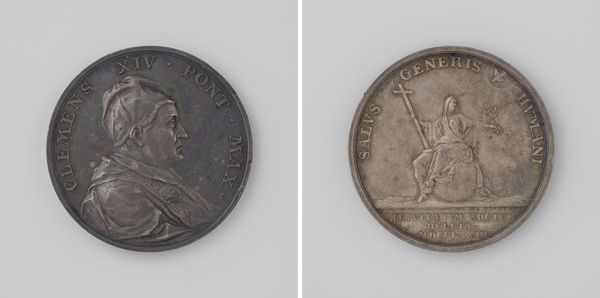
Johannes Decker Zimmerman, vijftig jaar predikant bij de Evangelisch Luthersche Gemeente te Utrecht 1858
0:00
0:00
johanphilipvanderkellen
Rijksmuseum
metal, sculpture
#
portrait
#
metal
#
sculpture
#
sculpture
#
history-painting
#
academic-art
Dimensions: diameter 4.8 cm, weight 400 gr
Copyright: Rijks Museum: Open Domain
Curator: Let’s examine this striking silver medal, currently housed in the Rijksmuseum. It's titled "Johannes Decker Zimmerman, vijftig jaar predikant bij de Evangelisch Luthersche Gemeente te Utrecht," crafted by Johan Philip van der Kellen in 1858. Editor: It’s austere, yet somehow celebratory. The scale demands an intimacy; one has to get close to really appreciate its delicate carving. I wonder how the medal was struck—such precision work. Curator: The profile bust on the obverse displays the dignified figure of Zimmerman. Note the artist’s control of light and shadow, creating volume in such a limited space. It encapsulates Academic art perfectly, aiming for that Neoclassical clarity. Editor: Absolutely. But for me, the piece raises questions about craftsmanship. What kind of labor practices were in place? And consider the societal implications of mass production meeting elite portraiture like this. The materials speak to a very specific context. Who consumed such commemorative items and what social status did this purchase convey? Curator: An intriguing line of thought. Van der Kellen employs meticulous engraving techniques to represent Zimmerman’s likeness, his vestments and, indeed, his presence—evoking the virtues of devotion through carefully controlled visual devices. Even the script reflects those sober virtues. Editor: Yes, but let's push back against seeing it purely as virtue made metal. What was the cost, material and human? Mining silver wasn’t an easy process. This also feels like a negotiation between personal achievement and social role memorialized, right there in the cool, precious silver. Curator: I appreciate how you pull material concerns and modes of manufacture into the analysis. Indeed, those stars ringing the commemorative inscription add subtle depth to the geometric frame and call attention to its semiotic purpose. Editor: Right, it pulls attention to the fact this medal would have been made using moulds that allow for reproduction. While honoring this important man, it serves to validate the community responsible for minting the medals. I'm more intrigued now by the act of production that allowed a minister to be honored with an effigy and text so specifically placed within a circle made of silver. Curator: Looking at it anew, those concerns are impossible to dismiss. Editor: Always a good tension, art.
Comments
No comments
Be the first to comment and join the conversation on the ultimate creative platform.
